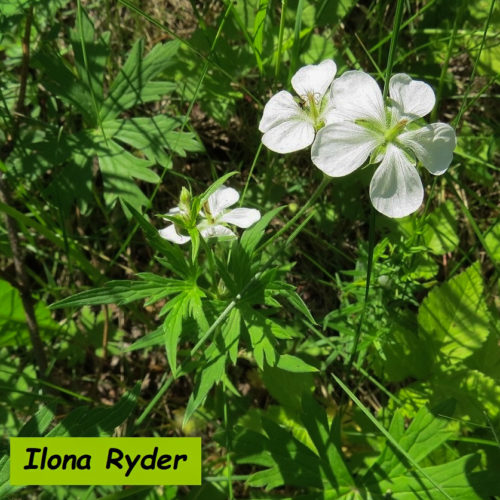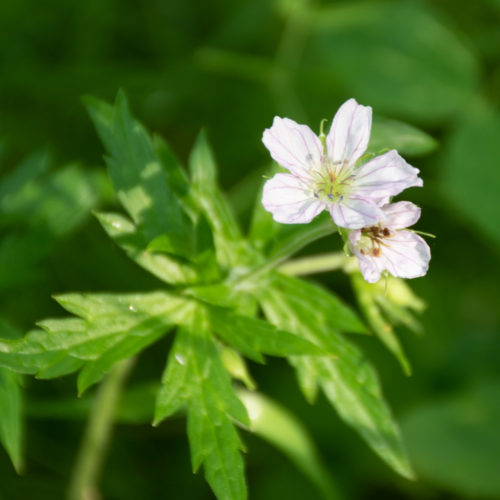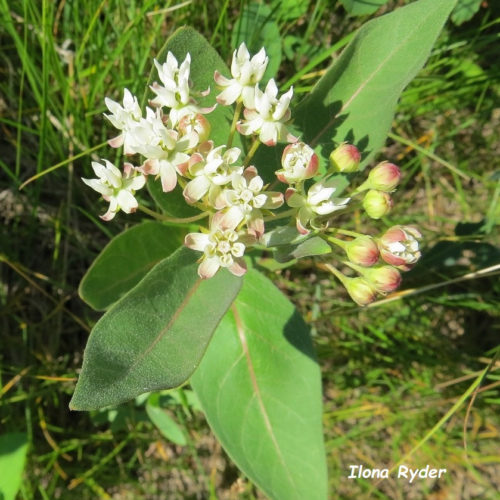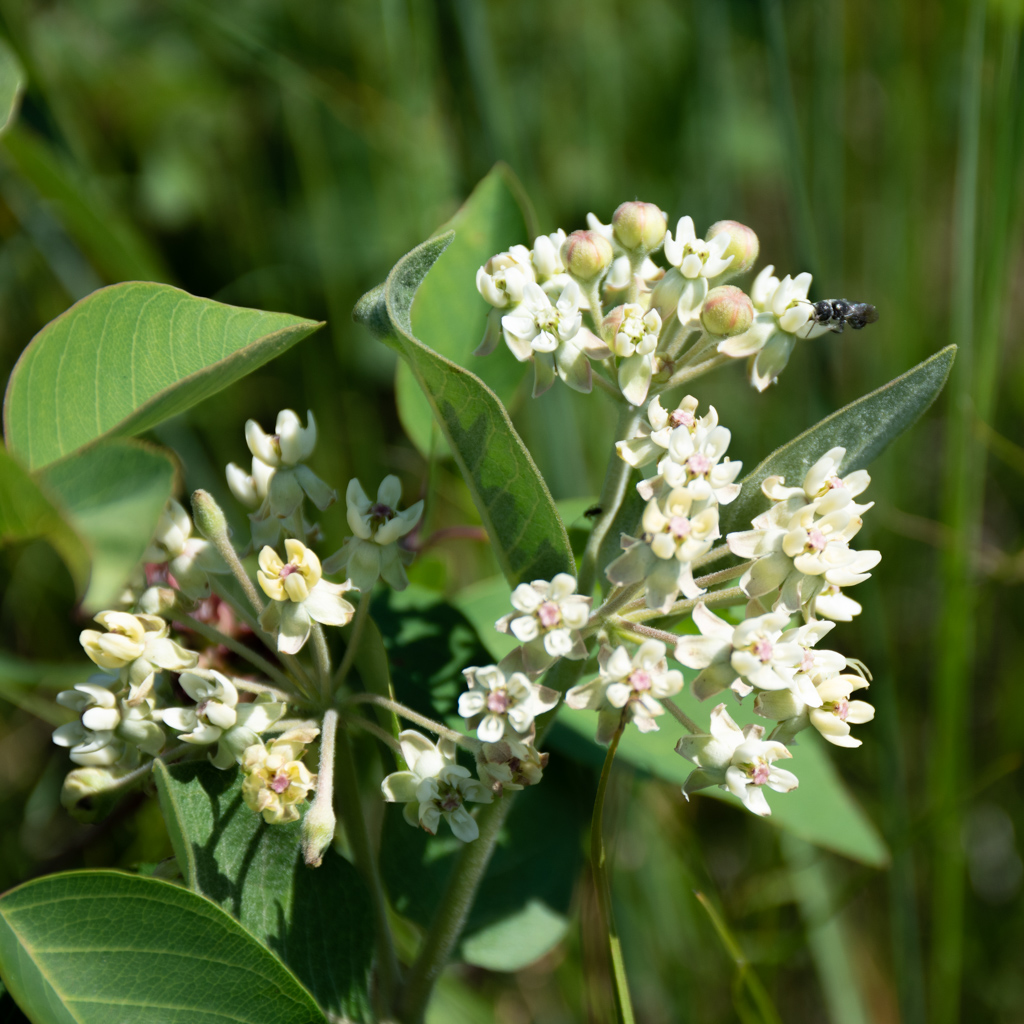Wild White Geranium (Geranium richardsonii) is a perennial, 40–80 cm tall, easily recognizable as a geranium by its FIVE main but up to seven irregularly lobed and “deeply divided, lightly hairy leaves” (Parish 263, Gadd 291).
[lgc_column grid=”50″ tablet_grid=”50″ mobile_grid=”100″ last=”false”]
This species of the Geranium family “was named for Sir John Richardson (1787–1865), the Scottish botanist assigned to Sir John Franklin’s expedition to Arctic America” (Parish 263).
Flowers
As with other geraniums, each flower has FIVE petals that are quite hairy at their base (centre of the flower) where there are FIVE generally bristle-tipped sepals. The petals are white but may be pinkish, and may also have pink or purplish insect-guiding lines to the centre.
Sources:
- Gadd, Ben. Handbook of the Canadian Rockies
- Parish, Coupé, Lloyd. Plants of Southern Interior B.C.
[/lgc_column]
[lgc_column grid=”50″ tablet_grid=”50″ mobile_grid=”100″ last=”true”]
WASKAHEGAN FIELD NOTES
Found in late June along the Pipestone Creek trail, in airy, open aspen and poplar groves. The Wild White Geranium prefers dry rather than moist conditions.
Later in the season, you might see the FIVE parted seed capsules with long beaks shaped like a crane’s bill (Parish 263). The number FIVE seems to be a good identifying feature for this plant; check tame geranium plants in gardens and flower pots for comparison.
[/lgc_column]
photos



